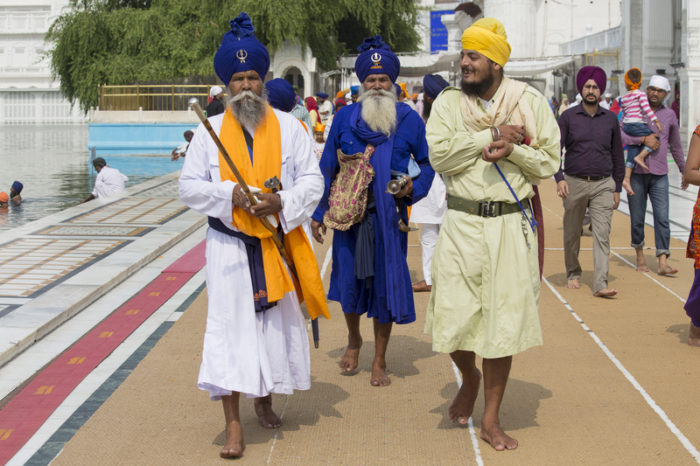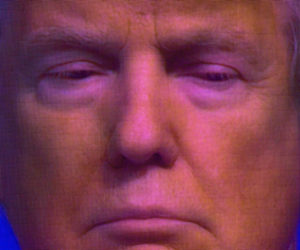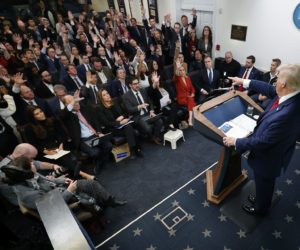
I’m visiting Delhi after an 8 year absence. My heart and head are reeling from the sounds and sights of this beloved ancient city crowded with old forts, Muslim mosques, Churches, Hindu temples and Sikh Gurudwaras (temples).
Thursday night is a big night for India’s Sikh community, which includes expatriates who are now among the most successful people in the United States, Canada and Britain. In a grand ceremony for the first time, India’s Prime Minister Narendra Modi will celebrate the birth 400 years ago of a Master of the Sikh religion, Guru Teg Bahadur.
Sikhs have lived in America for over 125 years and are among their new home’s most dynamic and hardworking people. There are about 500,000 Sikh Americans, who follow their religion’s vital tenets that particularly emphasize social equality, truthful living, service to humanity, and devotion to God.
Modi, who many see as a controversial nationalist leader, probably thinks that such principles are what all Indians need now, especially because they are no different from those of India’s Christians, Muslims, Buddhists, Jains and Hindus. For instance, every Hindu prayer starts with invocation of peace, harmony and brotherhood among all peoples everywhere. In fact, despite occasional unrest the cultural diversity of India’s people and their beliefs is in itself a universal declaration of human values and equality of rights for everyone. These are also enshrined in the Constitution.
Sikhism’s principles are certainly worth emulating even as the entire world’s people enter likely economic depression and mental despair as the Russia-Ukraine war broadens and deepens. The seemingly fruitless struggle of President Joe Biden and European leaders to halt the destruction or genocide of Ukrainians is disheartening.
Guru Teg Bahadur was beheaded in 1675 at the orders of an Emperor of the Moghul dynasty to stop a rebellion against the rulers of India, who descended from Muslim invaders from Central Asia. Followers of Sikhism have not forgotten the injustice and cruel treatment meted to one of their most revered religious leaders.
By commemorating the Great Master’s birth, Modi is sending out a positive message of harmony to all members of religious communities living as free citizens in a secular India, with their rights protected by the independent nation’s constitution promulgated in 1948.
He will use Delhi’s most potent political symbol, the Red Fort, which was the seat of Moghul Emperors. From the Fort’s ramparts, Prime Ministers of independent India have delivered a “state of the union message” since 15 August 1947, India’s Independence Day.
Modi will render the occasion unique by giving his speech after sunset for the first time in India’s modern history. Thus, he will also draw attention to the Sikh Guru’s martyrdom and use it to emphasize communal harmony and national unity among all of India’s extremely diverse peoples and religions.
This message of peace is sorely needed because of a sudden rise in communal clashes, particularly between Muslims and Hindus, in recent months. They have been small, involving a few hundred persons from both sides, and violence has caused only a few deaths and injuries, including among the police. But local communities are a tinder box of tensions especially as the cost of living is exploding especially for energy and food, partly because of the Ukraine-Russia war.
The tinderbox is visible everywhere. Just as in my youth, Delhi’s teeming people elbow their paths cheek to jowl as they hurry to their homes, places of work and places of worship. The strident hum of change and progress is everywhere as these descendants of some of the world’s oldest cultures, religions and civilization catch up with the frenzies of humankind’s common 21st century.
School girls and little old ladies mesmerized by smartphones are almost bumping into lamp posts and street vendors. The scenes are both hilarious and alarming.
Modi, an astute politician, is using the symbolism of one of Sikhism’s most revered martyrs to send his message of peaceful economic and social development. He will show humility by speaking not from the Fort’s ramparts but its lawns. He is also trying to win Sikh loyalty to the Indian State because tiny radical groups funded mostly by Canadian Sikhs occasionally call for an independent homeland in Punjab, a state that has a small Sikh majority but is home to many of other religions.
He seems to have chosen his moment well because Sikhism was founded in northern India over 550 years ago in 1469 as a call by its founder, Guru Nanak, for communal harmony between Islam, the religion of the country’s Emperors, and his disciples who were named “Sikhs” or the “learned”. Guru Teg Bahadur was the ninth in this lineage.
Photo 67624956 © Oleg Doroshenko | Dreamstime.com
















